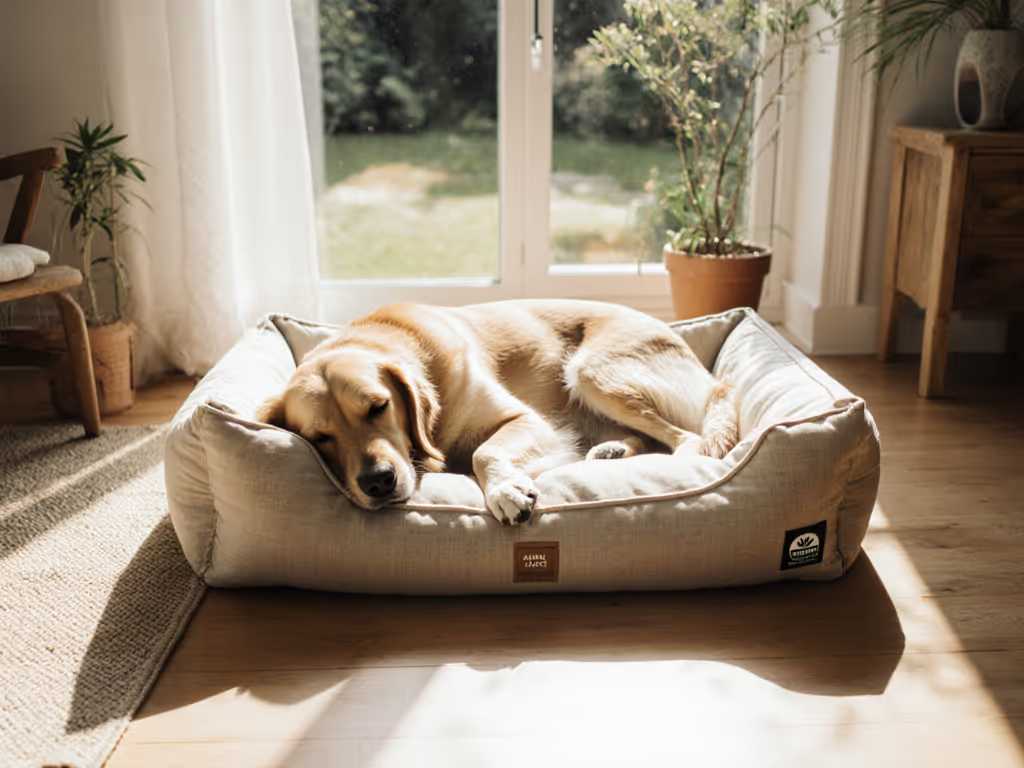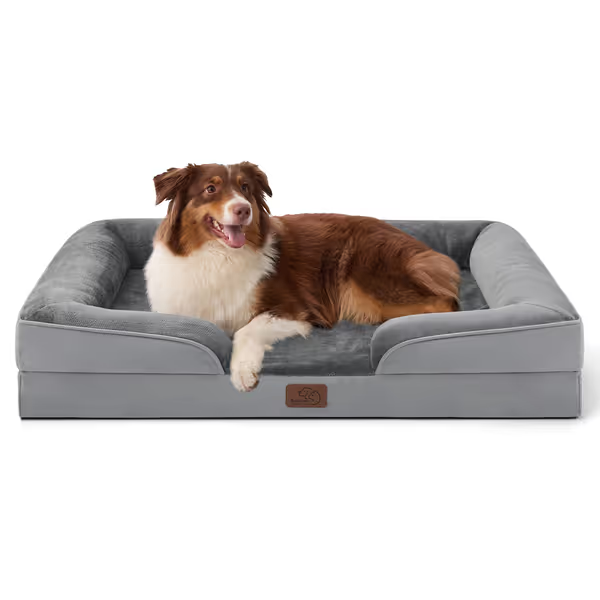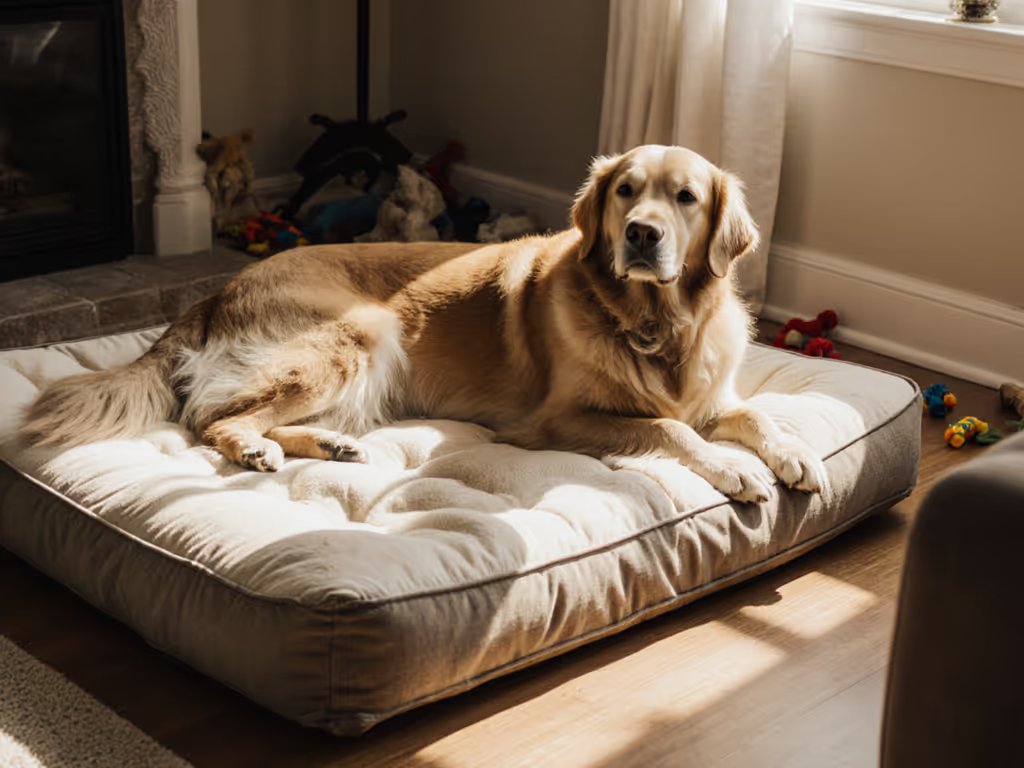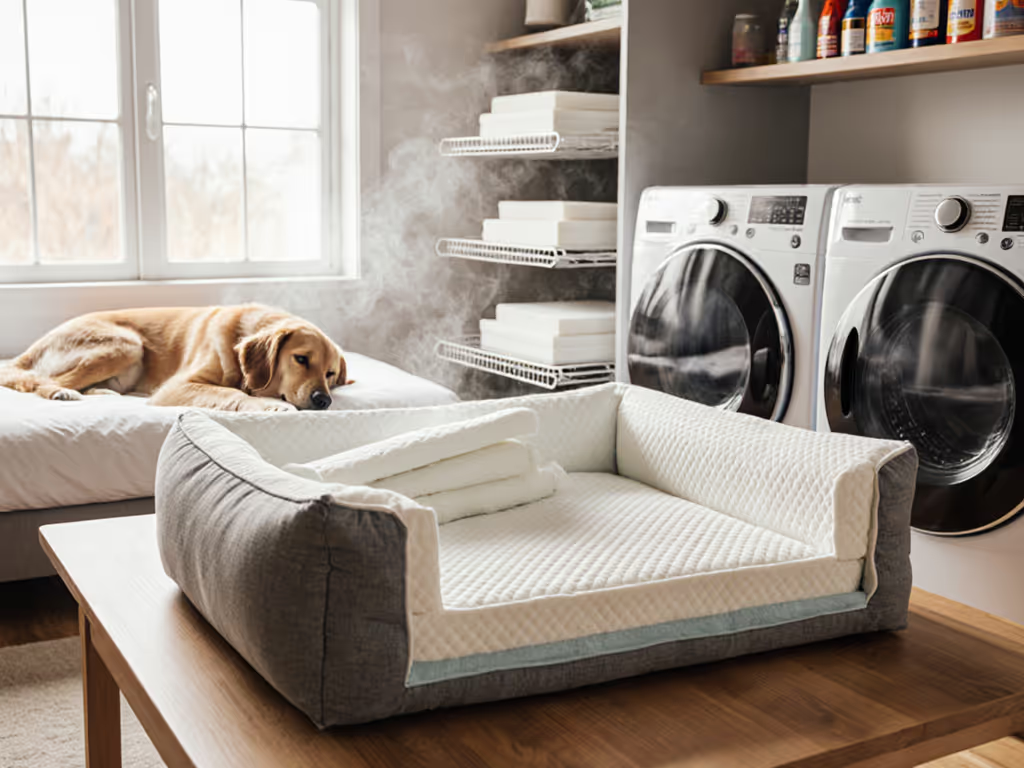
Choosing an Eco-Friendly Washable Dog Bed: Materials and Certifications

True comfort starts with alignment and temperature balance, not just plushness. Selecting a washable dog bed that's both eco-friendly and non-toxic requires understanding materials and certifications, critical factors that impact your dog's health and our planet. Millennial and Gen X pet parents increasingly demand environmentally friendly pet beds that merge safety with sustainability, especially given dogs spend 12-14 hours daily sleeping. This guide decodes material science and certification benchmarks so you can make informed choices.
Core Health and Environmental Concerns
Conventional pet beds often contain flame retardants, formaldehyde, and heavy metals linked to allergies and long-term health risks [1][5]. Off-gassing from synthetic foams exposes dogs to volatile organic compounds (VOCs), reducing indoor air quality [1][5]. Beyond health, traditional beds contribute to landfill waste through:
- Non-renewable petroleum-based foams
- Non-biodegradable polyester fabrics
- Frequent replacements due to poor durability
Certifications address these issues by enforcing strict material standards. Prioritizing them ensures your non-toxic sustainable bed aligns with both safety and ecological responsibility. For hazard identification and safer material choices, see our non-toxic dog bed safety guide.
Material Breakdown: From Organic Fibers to Recycled Innovations
Natural Latex Derived from rubber trees, natural latex offers orthopedic support without polyurethane foam's toxins. Look for Global Organic Latex Standard (GOLS) certification confirming organic sourcing and processing [4][6]. Shredded latex molds to body shape while maintaining breathability, which is critical for temperature-sensitive dogs [6].
Organic Cotton/Hemp Global Organic Textile Standard (GOTS)-certified cotton or hemp provides:
- Hypoallergenic surfaces for sensitive skin [2][5]
- Moisture-wicking temperature regulation [5]
- Durability surviving 50+ washes when properly constructed [4]
Recycled Materials Beds using post-consumer plastics (e.g., recycled PET) divert waste but warrant scrutiny. While brands like West Paw use OEKO-TEX certified fabrics from recycled bottles [3], ensure:
- Tightly woven textiles preventing microplastic shedding [5]
- No odor-trapping layers
- CertiPUR-US certification if combined with foam
Avoid: Untested memory foams, vinyl waterproofing, and chemically treated polyfills.
Essential Certifications Decoded
Third-party certifications validate safety claims often missing in marketing. Prioritize these verified standards:
| Certification | Focus Area | Key Requirements |
|---|---|---|
| CertiPUR-US® | Foam components | No PBDEs, mercury, or phthalates; low VOC (<0.5ppm) [1][7] |
| GOTS | Organic textiles | ≥95% organic fibers; chemical-free processing [2][4] |
| OEKO-TEX® Standard 100 | Textiles/foams | 350+ harmful substances tested [3][4] |
| MADE SAFE® | Overall product | Screens 6,500+ known toxins [4] |
Beds bearing 2+ certifications (e.g., GOTS + OEKO-TEX) offer maximum assurance against greenwashing.
Washability: Beyond Removable Covers
A truly washable dog bed requires:
- Machine-washable covers (60°C capable to kill mites)
- Waterproof barriers like TPU-lined fabric (safer than PVC [2][6])
- Quick-dry materials preventing mildew (e.g., organic cotton dries 30% faster than polyester)
- Reinforced seams surviving repeated washing cycles
Naturepedic's beds exemplify this with fully removable, machine-washable covers and waterproof TPU layers [6]. For large-breed owners, seek industrial-sized drum compatibility.
Matching Materials to Sleep Styles
Curlers: Bolstered beds with GOTS-certified organic cotton; provides nestable warmth without overheating [4][6]. Sprawlers: Latex-core flats with breathable hemp covers; maximizes heat dispersion [5]. Seniors: Medium-firm latex + removable orthopedic inserts; eases joint pressure during repositioning [6].
Watch the sleep, not the label. Your dog's posture, whether curled, sprawled, or perched, determines material suitability more than marketing terms.
Actionable Selection Strategy
- Audit current bed: Note flattening, odors, or persistent scratching, which are signs of material failure.
- Measure twice: Optimal dimensions = dog's length + 8" for stretching room.
- Certification triage: Prioritize OEKO-TEX or CertiPUR-US for foam beds; GOTS for textiles.
- Test cleanability: Confirm cover removal, washer capacity, and drying time pre-purchase.
For cost-effective sustainability, consider Bedsure's $39.99 orthopedic bed. It combines CertiPUR-US foam with an OEKO-TEX certified cover

Bedsure Orthopedic Dog Bed
, though natural materials remain preferable for allergy-prone pets.
Investing in certified materials transcends trendiness, it safeguards your dog's health while reducing environmental harm. As I learned fostering a stiff-hipped shepherd, the right support unlocks restful sleep. Start by scrutinizing certifications, then align materials to your dog's sleep language.




